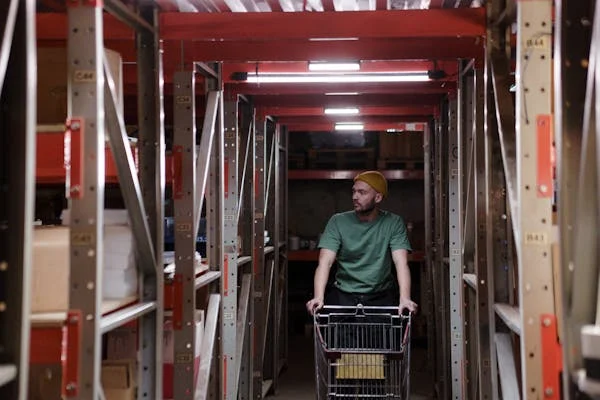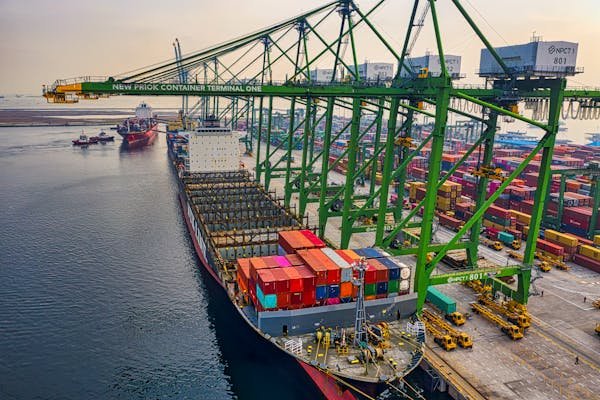Supply chains have always been the heart of business operations. But in recent years, especially after COVID and rising global instability, companies around the world have started asking a new question—should we keep relying on global supply chains, or should we bring things closer to home?
1. 83% of North American manufacturers are likely to reshore some production by 2025
Why it’s happening
Reshoring isn’t just a buzzword anymore. For many North American manufacturers, it’s a real and active strategy. With over 8 in 10 planning to reshore by 2025, the movement is gaining momentum.
This shift is driven by one major factor: control.
When companies rely on overseas suppliers, they expose themselves to risk—delays, miscommunication, political disruptions, tariffs, and more. By bringing operations closer to home, manufacturers gain more control over production timelines, product quality, and even customer satisfaction.
What this means for you
If you’re a North American manufacturer—or even just operate within one—this is your signal to review your own supply chain strategy. Ask yourself:
- Where are your critical suppliers located?
- How long would it take you to recover from a delay overseas?
- What would reshoring part of your production do for your lead times?
Even reshoring just a portion of your production can reduce risk and improve customer satisfaction. And with reshoring becoming a trend, local suppliers are expanding their capabilities, making it more feasible than ever.
2. 79% of U.S. companies with global supply chains are actively re-evaluating nearshoring
The big rethink
Nearshoring means moving production or supply chain operations closer to your home market, but not necessarily within it. For U.S. companies, that often means moving operations from Asia to Mexico or Latin America.
Almost 80% of companies are now re-evaluating their entire supply chain structure through this lens.
What’s pushing them? Faster delivery times, lower shipping costs, and fewer disruptions. Add to that geopolitical uncertainty in Asia, and you have a strong reason to nearshore.
Action steps
If you’re part of that 79%, don’t just re-evaluate. Take action. Start small by identifying one or two key components that are high risk if delayed. Find alternative suppliers in Mexico or another nearby country. Set up a test run to compare efficiency and cost.
You may find that nearshoring saves you time, lowers costs, and gives you a better grip on quality.
3. 60% of businesses plan to regionalize their supply chains to improve resilience
Building stronger systems
Regionalization goes a step further than nearshoring. It’s about creating supply chains that operate mostly within a specific region—like North America, Europe, or Southeast Asia.
The goal? Resilience.
Companies don’t want to be stuck again like they were during COVID—scrambling to find parts or raw materials because of delays halfway across the world.
With 60% now planning to regionalize, we’re seeing a clear move toward stability.
What to do next
If you haven’t thought about regionalization yet, it’s time to start. Start by mapping your current supply chain. Then identify bottlenecks or high-risk areas. Could you source the same product from a supplier in your region? Could you build partnerships with backup suppliers in your area?
Make resilience your focus, even if it comes at a slightly higher cost. That cost will pay for itself in avoided delays and stronger customer trust.
4. 71% of global CEOs said supply chain localization is a priority in the next 3 years
From boardroom to blueprint
This stat shows that localization isn’t just a trend at the operational level—it’s a board-level priority. When over 70% of global CEOs name it as a top focus, that means serious budget, strategy, and manpower are being dedicated to it.
Why? Because leaders have seen the cost of not localizing.
Supply chain localization is no longer about just saving money. It’s about customer experience, brand reputation, and survival during disruptions.
Strategic advice
If you’re in a leadership role, it’s time to put this on your strategic roadmap. If you’re not in leadership, this is a golden opportunity to propose high-value initiatives that align with what leadership is already focused on.
Look for ways to present localization strategies that deliver long-term ROI. Include scenarios where localizing avoids losses or strengthens brand reliability.
5. 52% of Fortune 500 companies have announced reshoring initiatives since 2020
Leading by example
Over half of Fortune 500 companies are reshoring. That’s not just a few outliers—it’s a major signal that this is the new normal.
Why does this matter to you?
Because Fortune 500s often set the trends that others follow. Their reshoring moves have ripple effects. They trigger shifts in supplier ecosystems, logistics hubs, labor trends, and even regulation.
What to take from this
Keep an eye on what big players in your industry are doing. If they’re reshoring and localizing, there’s a good chance the entire supply chain landscape is going to change.
Start exploring local partners now, before demand outpaces supply. The earlier you adapt, the more options you’ll have.
6. 85% of surveyed logistics executives noted an increase in nearshoring activity
Logistics doesn’t lie
If anyone knows where supply chains are headed, it’s logistics professionals. When 85% of them report growing nearshoring activity, it’s not just theory—it’s boots-on-the-ground reality.
Logistics companies are seeing more shipments between countries within the same region, fewer transoceanic moves, and more requests for local fulfillment centers.
Tactical moves
Start talking to your logistics partners. Ask what trends they’re seeing. Ask about their local or regional capabilities. Can they help you consolidate or fulfill from closer hubs? Do they offer services in nearby countries that align with your nearshoring goals?
Use their insights to guide your next move.
7. 47% of European firms are investing in local suppliers to reduce dependencies
A shift in the European supply chain mindset
Nearly half of European businesses are investing directly in local suppliers. That’s a major shift from the previous decades of heavy global outsourcing, especially to Asia.
Why is this happening?
Europe has seen firsthand how global disruptions—from the pandemic to geopolitical instability—can create bottlenecks. Add the push for sustainability and reduced carbon emissions, and the shift to local suppliers becomes a strategic win.
Local sourcing means less dependency on foreign markets and better response times in volatile conditions.
Your next steps if you’re in Europe
If your business is based in Europe, or relies on European partners, now’s the time to audit your sourcing practices.
Reach out to local suppliers. Even if you don’t switch right away, start building relationships. You’ll be better positioned when global disruptions hit again.
If you’re a supplier yourself, consider how to market your services to local businesses. Focus on responsiveness, reliability, and sustainability—these are what companies are looking for as they localize.
8. 68% of companies increased investment in domestic suppliers post-COVID
The pandemic’s long-lasting effect
COVID taught businesses a tough lesson: when your supply chain is stretched across continents, you’re always one shipping delay or lockdown away from disaster.
Almost 70% of companies responded by increasing investment in domestic suppliers. That means they aren’t just ordering from local sources—they’re helping those suppliers grow, innovate, and deliver faster.
This isn’t a short-term fix. It’s a long-term strategy to build a more agile, dependable network.
Making domestic sourcing work
Domestic sourcing doesn’t automatically mean lower cost or faster fulfillment. It requires planning.
Here’s how to get it right:
- Partner with suppliers willing to scale alongside you
- Co-invest in technology or process improvements
- Lock in longer contracts to secure pricing and stability
The key is to treat domestic suppliers as strategic partners, not just vendors.
9. 49% of U.S. firms have added domestic suppliers to their sourcing portfolios
Diversification in action
It’s not just about switching suppliers—it’s about adding more. Nearly half of U.S. firms have added at least one domestic supplier to their portfolio, even if they’re still buying globally.
Why? Because one of the smartest ways to reduce supply chain risk is to diversify.

If one supplier fails, you have a backup. If overseas shipping gets delayed, you can fulfill from a local source.
Build a resilient sourcing network
You don’t need to replace all your current suppliers. Start by identifying:
- Your most critical components
- Your most fragile supply lines
Then add domestic suppliers as backups. Over time, you might find they become your go-to partners.
Resilience isn’t about perfection—it’s about options.
10. 57% of supply chain leaders cite localization as a top risk mitigation strategy
Fighting risk with proximity
Risk management is no longer just a finance or compliance concern. It’s now central to supply chain strategy.
More than half of supply chain leaders see localization as one of their top tools to reduce risk.
Why? Because the closer your suppliers and logistics partners are, the more flexibility you have when things go wrong.
You can visit facilities, change plans quickly, or even pick up a phone call in real-time. Those are advantages you don’t always get with distant, offshore partners.
Turn risk mitigation into a competitive edge
Don’t treat localization as just insurance. Use it to improve your brand story.
Customers care about reliable delivery. Investors care about stable operations. Employees care about company resilience.
By using localization as a proactive move, you create confidence across the board.
11. 45% of companies are relocating manufacturing from Asia to North America
From offshore to near home
Asia has long been the manufacturing capital of the world. But that’s changing.
Nearly half of companies that once relied on Asian factories are moving operations back to North America.
Labor cost gaps are shrinking, automation is making local production more efficient, and political tensions have made long-distance supply chains risky.
Is it time to make the move?
This stat doesn’t mean you must abandon Asian suppliers. But it does mean you should re-run the numbers.
With rising shipping costs, import duties, and lead time delays, local manufacturing might now be more cost-effective than you think.
Set up a pilot project. Try manufacturing one product line locally. Track the results. You may be surprised at how competitive local production has become.
12. 76% of firms said geopolitical tensions accelerated local sourcing plans
Politics and supply chains: an unavoidable mix
Tariffs. Sanctions. Trade wars. Regulatory changes.
Geopolitical tensions have created a wave of uncertainty, and more than three-quarters of businesses say this directly accelerated their move to local sourcing.
The message is clear: depending on one region—or one country—makes your business vulnerable to political decisions you can’t control.
Prepare your business for uncertainty
If your suppliers are concentrated in politically unstable regions, now is the time to rethink.
Look at your exposure. If a trade route shuts down tomorrow, what happens to your operations?
Start building alternatives now, even if you don’t use them yet. The future favors those who prepare early.
13. 55% of auto industry players in the U.S. are reshoring production lines
The automotive industry leads the way
The auto industry has massive, complex supply chains. For years, it’s been a poster child for globalization.
But now, more than half of U.S. auto companies are reshoring. That’s a big deal—and a sign of what’s to come across other sectors.
Why? Because autos rely on just-in-time manufacturing. Every delay costs money and reputation. Localization helps cut those risks.
What you can learn from automakers
Look at how carmakers are approaching reshoring:
- They’re partnering with local parts manufacturers
- They’re building local assembly hubs
- They’re investing in logistics that shorten delivery windows
You can apply the same principles to your own supply chain, even if you’re in a completely different industry.
Focus on speed, reliability, and risk reduction.
14. 61% of electronics manufacturers are evaluating supply chain localization
Chips, boards, and challenges
The electronics industry has been one of the hardest hit by global supply chain issues.
From chip shortages to factory closures, delays have impacted everything from smartphones to refrigerators.
Now, 61% of electronics manufacturers are seriously looking into localization.
The goal? Shorter lead times, fewer delays, and more control.
If you’re in electronics…
Start evaluating your highest-risk parts. Can you source PCBs or components locally? Are there contract manufacturers nearby who can take on some of your production?
Electronics is a fast-moving industry. The companies that localize early will be the ones who can respond fastest to market changes.
15. 50% of global businesses are allocating capex for localized infrastructure
Putting real money behind localization
When a company starts putting capital expenditure (capex) into localized infrastructure—factories, warehouses, transportation hubs—it’s no longer just an idea. It’s a committed strategy.
Half of all global businesses are now doing exactly that. They’re building or upgrading infrastructure that supports a local or regional supply chain model.
This includes:
- Localized production facilities
- Domestic distribution centers
- Regional logistics hubs
These moves are big—and they’re designed for the long haul.
How to make the case for capex in localization
If your company hasn’t yet allocated capex for supply chain localization, consider building a case based on:
- Reduced dependency on imports
- Improved delivery timelines
- Lower overall supply chain risk
- Increased flexibility in uncertain times
The key is to connect infrastructure investments with measurable business value. Show how a local distribution center could shorten delivery times. Or how a nearby manufacturer could reduce your need for large inventory buffers.
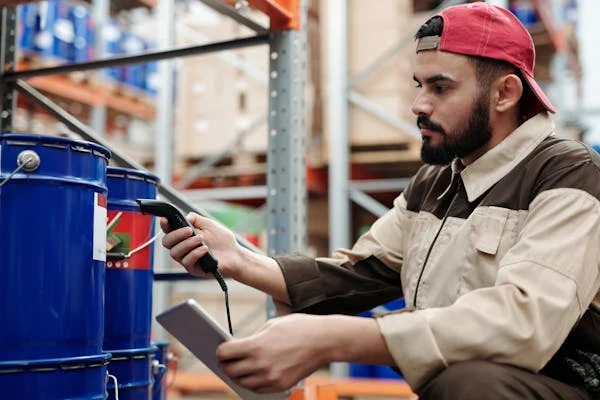
Don’t think of localization as a cost. Think of it as a foundation for long-term resilience.
16. 40% of firms intend to have 75% of their supply chain localized by 2030
The long game
Not every company can localize overnight. But many are setting long-term goals.
40% of firms now aim to have at least three-quarters of their supply chain localized by 2030.
That’s a massive shift—and it speaks to the scale of change that’s happening.
Localization is no longer just a short-term fix. It’s becoming a core supply chain strategy.
Planning your localization roadmap
If 2030 feels far away, that’s a good thing. It gives you time to plan.
Start by setting your own benchmarks. Maybe aim for 25% localization within 2 years, then 50% by 2028, and 75% by 2030.
Break the project into phases:
- Phase 1: Identify and onboard local suppliers for non-critical components
- Phase 2: Bring key production closer to home
- Phase 3: Build or partner with local logistics and distribution hubs
Having a roadmap keeps you focused, and it helps align the rest of your organization around the vision.
17. 70% of procurement leaders said localization improves supply chain visibility
Seeing clearly, acting faster
One of the most underrated benefits of supply chain localization? Visibility.
When your suppliers are nearby, you can:
- Visit their facilities
- Understand their processes
- Catch issues early
- Collaborate more easily
And procurement leaders are noticing. Seven in ten say that localization has directly improved their ability to see and manage what’s happening across the chain.
Visibility as a strategic advantage
Better visibility means better decisions.
If you know how much inventory your local supplier has, or how quickly they can ramp up production, you can:
- Respond to market demand
- Reduce excess inventory
- Avoid production delays
This allows you to operate leaner and smarter. And that’s a competitive edge.
18. 64% of global businesses cited customer pressure for local products
Listening to what the market wants
Customers are speaking—and businesses are listening.
Nearly two-thirds of companies say their shift toward local supply chains is being driven by customer demand.
Consumers today care about:
- Where products are made
- How quickly they’re delivered
- How sustainable the supply chain is
If your product is made locally, customers perceive it as more reliable, ethical, and environmentally friendly.
Turning customer demand into opportunity
Don’t just localize—talk about it.
Make it part of your brand. Highlight local sourcing on your packaging, in your marketing, and during sales conversations.
People want to buy from companies that share their values. Show them you’re one of those companies.
19. 59% of surveyed companies said local sourcing improved delivery timelines
Speed is everything
One of the clearest advantages of local sourcing is speed.
Nearly 6 out of 10 companies say they’re now able to deliver faster because of localized suppliers. That’s huge—especially in industries where speed equals sales.
Faster delivery means:
- Happier customers
- More repeat business
- Better inventory turns
- Lower carrying costs
How to optimize delivery timelines through localization
If your delivery times are a weak point, look at your supply chain map.
Are you importing something that could be sourced locally? Are your fulfillment centers too far from your customer base?
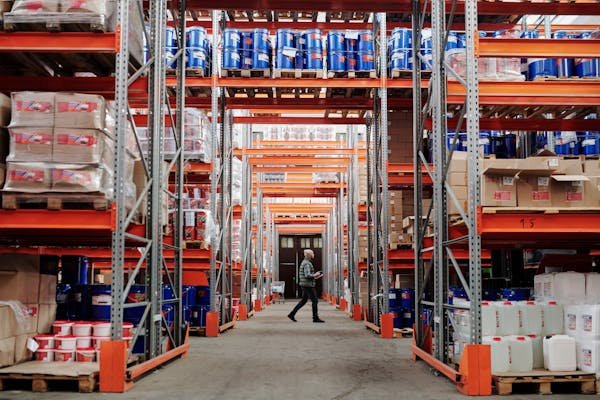
You don’t have to localize everything at once. Start with high-margin products or items with consistent demand. Shortening the supply line for those will give you the biggest payoff.
20. 44% of retailers are building local distribution centers to reduce costs
Localization and logistics go hand-in-hand
Retailers know the value of fast, low-cost shipping. So nearly half are now investing in local distribution centers.
By reducing the distance between product and customer, they cut shipping costs and speed up delivery.
And in a world where two-day delivery is becoming the norm, that’s a necessity—not a luxury.
What this means for your logistics strategy
Even if you’re not a retailer, you can learn from this trend.
Ask yourself:
- Are your products stored close enough to your top customer regions?
- Would building or partnering with a local fulfillment center reduce costs?
- Could you offer faster delivery and beat competitors?
Local distribution isn’t just for eCommerce giants. It’s a smart play for any business that wants to deliver more efficiently.
21. 73% of firms localized supply due to pandemic disruptions
The COVID catalyst
The pandemic exposed just how fragile global supply chains really are.
From factory shutdowns to port delays, every link in the chain was tested. And nearly three-quarters of companies responded by localizing supply wherever possible.
This stat underscores something important: localization wasn’t just a trend. It was a survival response.
Don’t wait for the next crisis
Use this stat as a reminder that proactive change beats reactive panic.
If you got through COVID with minimal disruption, you were lucky. If you didn’t, you probably don’t want to repeat the experience.
Start building redundancy into your supply chain now. And make local sourcing a key part of that strategy.
22. 38% of manufacturers plan to double their local sourcing share by 2026
Scaling up localization efforts
Manufacturers aren’t just dabbling in localization—they’re scaling up.
By 2026, nearly 4 in 10 manufacturers plan to double the amount of materials or components they source locally.
This is happening across industries—from food production to aerospace. The goal is the same: create faster, more reliable, and more sustainable supply chains.
How to follow suit
If you’re in manufacturing, set a clear goal for local sourcing growth.
Audit your current sourcing ratios. Then look for areas where local alternatives exist but haven’t been explored.
You might be surprised how much innovation is happening in your own backyard.
23. 62% of CPG companies shifted sourcing closer to major customer markets
Consumer products, closer to the consumer
Consumer Packaged Goods (CPG) companies live and die by how quickly they can get products on shelves or to doorsteps. That’s why nearly two-thirds of them are shifting sourcing closer to their main customer bases.
The benefits? Shorter delivery windows, better shelf availability, fewer stockouts, and higher customer satisfaction.

When products are made or sourced close to where they’re consumed, logistics become simpler, faster, and more predictable.
Apply the CPG playbook to your business
You don’t have to be in CPG to benefit from this strategy.
Ask yourself:
- Where are most of your customers?
- How close is your production or warehousing to them?
- What would it cost—and save—to move some operations closer?
Even shifting part of your product line to a facility near your biggest market can create a meaningful difference in delivery and customer satisfaction.
24. 48% of businesses are prioritizing local over low-cost sourcing
Value over price
This stat marks a major shift in mindset. Nearly half of businesses now say that local sourcing—even if it costs more—is worth it.
Why?
Because low-cost global sourcing often comes with hidden costs: shipping delays, quality issues, missed deadlines, and unpredictable risks.
By sourcing locally, companies gain reliability, responsiveness, and often better customer outcomes.
Reframing the cost equation
When analyzing suppliers, look beyond price per unit.
Instead, consider:
- Total landed cost
- Time to market
- Customer service impact
- Brand perception
Sometimes paying a bit more upfront saves money—and headaches—down the line.
25. 67% of U.S. tech firms are investing in domestic chip manufacturing
Chips are coming home
After facing severe chip shortages during the pandemic, U.S. tech companies aren’t taking any more chances.
More than two-thirds are investing in domestic chip production to reduce dependency on foreign suppliers—especially those located in politically sensitive regions.
This shift is monumental. It shows how even the most globalized industries are now prioritizing local security over outsourcing.
The broader takeaway
Even if you’re not in semiconductors, take note: critical components that can halt your business deserve special attention.
If there’s one part or product you absolutely cannot go without, ask yourself:
- Can I source this locally?
- If not, can I stockpile it?
- Or can I co-invest in a local supplier?
Critical components require critical thinking.
26. 35% of companies already operate local-only supply chain models
The localization finish line
More than a third of businesses have already made the full switch—they now operate supply chains that are entirely local or regional.
That means every stage—from raw materials to manufacturing to delivery—happens within a tight geographic footprint.
This is the ideal model for responsiveness, resilience, and sustainability.
Can you go fully local?
Not every business can localize 100%, but it’s worth exploring how far you can go.
Look at:
- Key regions where most of your customers are
- Local partners with the capability to scale
- Regulatory and logistical benefits of domestic operations
You may not need to go fully local everywhere—but going local where it matters most can make all the difference.
27. 53% of logistics companies plan to expand domestic warehousing
More warehouses, closer to customers
Over half of logistics firms are expanding domestic warehouse capacity. That’s a direct response to increased demand for local storage and faster last-mile delivery.
As companies move production and sourcing closer to home, they need distribution centers that can keep pace.
Domestic warehousing isn’t just about storage—it’s about speed, service, and sales.

What to consider in your warehousing strategy
If you sell physical products, now’s the time to revisit your warehouse footprint.
Ask:
- Are your warehouses located near your top customer regions?
- Are you paying for excess storage in far-off locations?
- Can you partner with 3PLs that offer regional or local warehousing?
More warehouses in the right places lead to smoother operations and happier customers.
28. 66% of executives believe localization will reduce carbon emissions
Going local to go green
Sustainability is more than a buzzword—it’s a business mandate. And two-thirds of executives now believe that localizing their supply chain will help them cut carbon emissions.
Here’s why:
- Less long-distance transportation
- Shorter delivery routes
- Fewer international freight shipments
In other words, a smaller carbon footprint.
Make sustainability part of your strategy
If your company is focused on ESG (Environmental, Social, Governance), localization can support those goals.
When creating your sustainability reports or communicating with stakeholders, highlight how shorter supply chains:
- Lower emissions
- Support local economies
- Reduce energy usage
It’s not just good for the planet—it’s good for business.
29. 51% of surveyed firms use AI to optimize local sourcing decisions
Smarter sourcing with smarter tools
Artificial intelligence is playing a bigger role in supply chain decisions. And over half of companies are now using AI to guide their local sourcing strategies.
AI helps companies:
- Analyze supplier performance
- Forecast demand
- Find gaps in their current sourcing
- Recommend better-fit local suppliers
It takes guesswork out of the process and replaces it with data-driven clarity.
Start small with AI
You don’t need a giant tech budget to get started. Even small AI tools or sourcing platforms can help:
- Score local suppliers
- Predict delivery timelines
- Balance costs vs. proximity
The goal isn’t to automate everything. It’s to make better decisions, faster.
30. 58% of global supply chain leaders rank localization over globalization for 2030
The future is local
The last stat says it all. A majority of global supply chain leaders are now betting on localization—not globalization—for the future.
That marks a seismic shift in how businesses think about growth, efficiency, and risk.
While globalization isn’t disappearing entirely, the pendulum is clearly swinging back toward local.
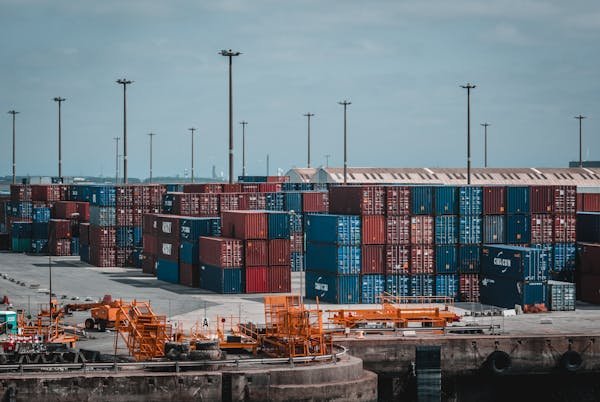
Planning for 2030 and beyond
If your current supply chain is built for a global-first world, now is the time to pivot.
You don’t need to overhaul everything tomorrow. But you do need to:
- Start planning now
- Identify where localization adds the most value
- Align your team around a new supply chain strategy
Your future customers, investors, and team members will thank you for building a supply chain that’s closer, faster, and stronger.
Conclusion
Supply chain localization is no longer a trend—it’s a movement. These 30 statistics show just how fast and widespread the shift has become.
Whether you’re a startup founder, procurement lead, or executive, the message is the same: the closer your supply chain, the better prepared you’ll be for whatever comes next.





